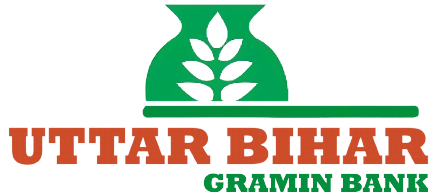Bihar Gramin Bank, like many regional rural banks in India, links insurance products to its deposit and loan accounts. These linked schemes can include low-cost government plans and bank-arranged group covers for life, accident, health or loan protection. Knowing which plans are available, who qualifies, what they actually cover, and how to claim helps you decide whether the extra premium is worth it.
Types of insurance typically linked to Bihar Gramin Bank accounts
The exact offerings can change with insurer tie-ups, but you will commonly see:
- Accident insurance (PMSBY or similar): A simple personal accident cover for accidental death and permanent disability. Why it’s offered: it’s very low-cost and gives basic protection to poor and rural customers. Typical sum insured: around ₹2,00,000 for a small annual premium (often quoted as ₹12/year under national schemes).
- Term life insurance (PMJJBY or group term): A pure-life cover paying a fixed sum on death of the insured. Why it’s offered: life cover secures families and is easy to administer through direct debit. Typical cover under PMJJBY is ₹2,00,000 for an annual premium in the low hundreds (e.g., ~₹330/year); group policies may vary by bank.
- Health/medical schemes: These are usually state or central government-sponsored health insurance schemes or bank-facilitated commercial mediclaim products. Why: to reduce out-of-pocket hospital costs for low-income customers. Coverage limits and features vary widely by scheme and insurer.
- Credit life / loan protection: Insurance linked to loans that clears outstanding loan balance on the borrower’s death or, in some plans, covers disability. Why: protects the lender and borrower’s family from the burden of debt. Coverage equals outstanding loan amount; premium is typically charged once or included in EMI.
- Group personal accident/life arranged by bank: Banks sometimes buy a group policy covering eligible account holders. Why: administrative ease and risk pooling reduce per-person cost. Terms are set by the bank and insurer.
Eligibility — who can enroll and why rules exist
- Account type: Most schemes require an active savings account with the bank. Why: premiums are collected by auto-debit and the bank acts as local administrator.
- Age limits: Government schemes typically set entry age limits. Example: PMSBY usually allows 18–70 for enrollment; PMJJBY typically allows 18–50 for joining (coverage renewable till 55). Why: fixed, low premiums are priced for lower-risk age groups; insurers limit entry to keep cover affordable.
- KYC and nomination: You must have KYC-complete accounts and nominate a beneficiary. Why: identification and nominee details speed up claims and prevent fraud.
- Account status: The account must be operative and meet the minimum balance or transaction rules specified by the scheme.
Coverage and premium structure — what to expect
Coverage under bank-linked schemes is usually simple and fixed rather than bespoke. Typical points:
- Fixed sum insured: Many national schemes use standard cover amounts (for example, ₹2 lakh). Banks’ group policies may have other fixed limits.
- Flat or slab premiums: Premiums may be flat (same for everyone in the plan) or vary by age band. For government-sponsored schemes, premiums are deliberately low because risk is spread across millions of members.
- Annual renewal: Most plans are annual and require renewal by auto-debit unless you opt out. Why: annual pricing keeps paperwork minimal and lets insurers adjust terms yearly.
- Exclusions and waiting periods: Look for exclusions (suicide, pre-existing conditions for health covers, risky hobbies for accident cover). Why: insurers exclude known high-risk events to keep premiums sustainable.
How to opt in
Steps are straightforward because the bank handles distribution:
- Visit your Bihar Gramin Bank branch or the bank’s customer service point. Ask for the specific scheme details and enrollment form. Why in-person: staff verify KYC, nomination and consent for auto-debit.
- Provide the required documents: Aadhaar or ID, account number, nominee details and signature. Why: documentation ensures identity and legal validity of nominee claims.
- Authorize premium collection: most schemes use annual auto-debit from your savings account. You will sign a mandate or give written consent.
- Collect the policy/benefit details and insurer contact: get a copy of the brochure or policy schedule and note the insurer’s claim helpline. Why: keeps you prepared if you need to file a claim.
Claims process — step-by-step
Although exact paperwork varies by insurer, the typical flow for death/accident claims is:
- Notify the bank and insurer immediately. Why: early intimation starts the claim process and prevents delays.
- Obtain and submit required documents: claim form, insured’s death certificate or disability certificate, FIR (for accidental cases), hospital records, identity proof, nominee’s bank details and KYC. Why: these documents prove entitlement and the event’s nature.
- Insurer scrutiny and investigation: the insurer verifies documents and may call for additional papers or medical reports. Why: prevents fraudulent claims and ensures correct settlement.
- Settlement or rejection with reason: if approved, payment is made to the nominee or bank (for loan-linked cover). If rejected, you receive a reason and appeal path. Why: transparency in reasons lets you take corrective steps like supplying missing documents or appealing.
Benefits for customers — why these linked plans matter
- Affordability: Low premiums make basic cover possible for low-income and rural populations. Why: risk pooling and bank distribution lower costs.
- Convenience: Enrollment, premium collection and claim intimation happen through your bank branch. Why: reduces paperwork and travel for remote customers.
- Financial protection: A small benefit can cover funeral costs, immediate family needs, or loan clearance. Why: prevents distress sales of assets or debt burden on families after a sudden death.
- Coverage for credit exposure: Loan protection stops outstanding loan becoming a family liability. Why: secures both borrower’s family and bank’s asset quality.
FAQs
- Q: Are these insurance schemes compulsory?
A: No. Most schemes are voluntary. The bank will ask for your consent before enrolling you. Why: consumer protection rules require explicit consent for insurance purchases. - Q: Can I opt out later?
A: Yes. Opt-out procedures differ; typically you can stop renewal by notifying the bank before the annual debit. Why: annual renewal gives customers flexibility to continue or discontinue. - Q: Will claim settlement be quick?
A: Many claims are settled quickly if documents are complete. However, complex cases or investigations can take longer. Why: completeness of proof and the claim’s nature determine processing time. - Q: Where should I confirm exact terms?
A: Always check policy documents provided by the bank or insurer and ask the branch. Why: bank packages and insurer terms can vary year to year and between different product tie-ups.
In short, Bihar Gramin Bank typically offers linked insurance — mostly government-backed low-cost covers and bank-arranged group policies. These give basic protection at low premiums and are convenient to manage through your account. Before you opt in, read the policy schedule, note exclusions and age limits, and keep copies of enrollment and nomination documents. If you need precise, current product names, premium rates or claim timelines, ask your local branch for the latest scheme brochure and insurer contact details.

Kritti Kumari is a banker and MBA graduate who writes about banking, finance, and customer-friendly services. She simplifies complex financial products into easy guides, helping readers understand Bihar Gramin Bank’s offerings and make smarter money decisions.

